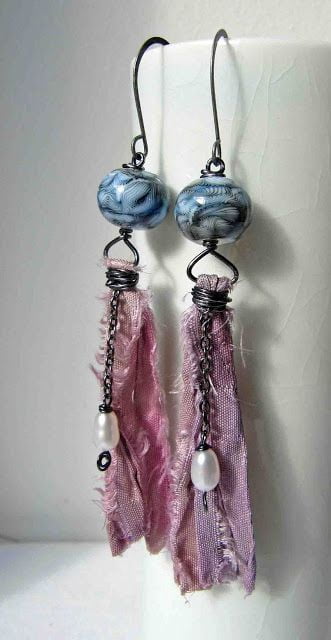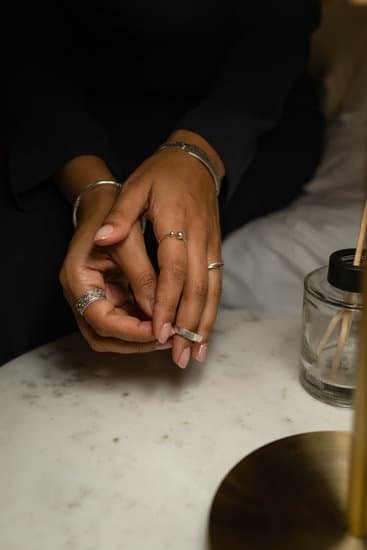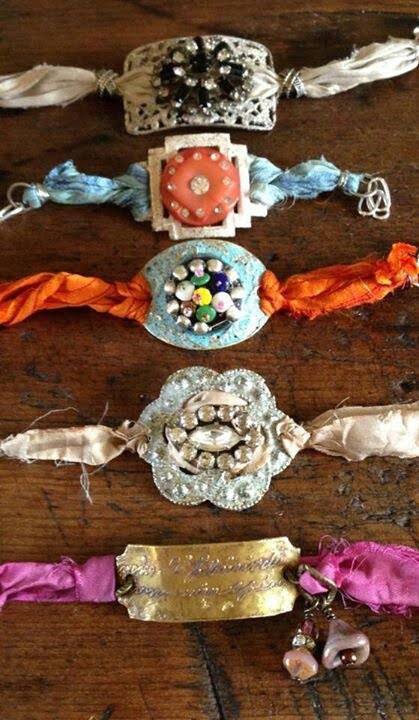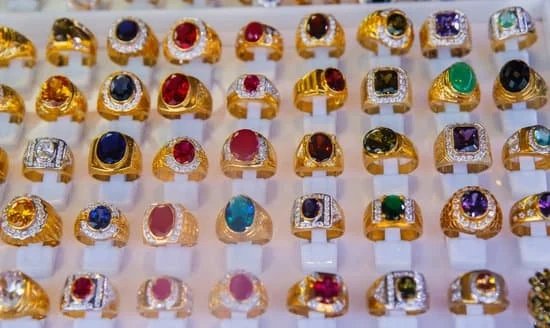Introduction
Jade jewelry has been prized for centuries. It is one of the oldest known and most sought-after gems in the world. The most valuable form of this stone is nephrite jade which has been found as far back as 5000 years ago in Western China, Taiwan, and Siberia. Jade jewelry also has a long tradition within Chinese culture where it was used to represent wealth and power. It has even been compared to diamonds due to its rarity and beauty.
In order to identify whether a piece of jewelry is made from jade, there are certain criteria that need to be looked at. First, one must examine the color and texture of the gemstone. Genuine jade can range from light green to deep emerald green with undertones ranging from blue, black, yellow or white. If a piece looks too bright or garish in color, it may not be real jade. The surface should also have a slightly waxy feel when touched; if it is too smooth or glossy then it could suggest that the jewelry is made from plastic rather than jadeite or nephrite jade.
Next, it’s important to watch for any fissures or cracks in the stone which can indicate that it may not be genuine jade jewelry. A good way to check for this would be by examining the edges of each gemstone since flaws or impurities usually appear along these areas before any other part of the stone does. Lastly, an easy way to check if an item may be real jade is by checking its weight – genuine jade tends to feel heavy because of its density while artificial stones often feel light in comparison as they’re made using cheaper materials such as glass or ceramic.
Different Jade Jewelry Types and Origins
One way to identify if the jewelry you are looking at is indeed jade is to distinguish its type. There are two main types of jade commonly used in jewelry – nephrite jade and jadeite. Nephrite jade is generally much more common, and it is typically less expensive, or seen as “common” jade. Jadeite, on the other hand, is rarer and can be distinguished by its’ bright variation of colors. Nephrite usually has a lighter tone, ranging from green to yellowish white. Additionally, where the stone originates from can indicate its quality. For example, Canadian nephrite typically has larger sizes compared to Chinese nephrite and Nepalese nephrite, making it slightly more valuable.
Another way to tell if your jewelry is made of genuine jade is to look closely at the colors within the stone itself. Genuine jade will consist of slight variations across a single stone. Fake stones may also have this shade change but it won’t be very distinct when compared against an authentic piece. In addition, real gemstones will also rarely contain perfect color being uniform shades throughout the stone due to their natural origin. Finally, unique markings might appear in genuine stones which cannot be replicated in fake pieces; this includes veins and swirl marks that can appear randomly on some gems such as malachite or turquoise which aren’t found on imitation pieces
Key Characteristics of Jade Jewelry
Jade jewelry is a popular choice for anyone interested in beautiful, unique jewelry design. However, understanding how to properly identify jade can be tricky. Knowing the key characteristics of jade jewelry can help you confidently tell real jade from imitations.
When investing in genuine jade objects or jewelry pieces, look for bright colors like emerald and deep green hues with hints of yellow, brown, white or pink. Jade can sometimes come with patches of charcoal gray markings which are known as “spider webbing” and is a sign of real jade. Additionally, the surface should have translucent characteristics when held up to light and should feel cold to the touch with a velvety smooth texture. Lastly, genuine jade should ring when tapped against another object; this phenomenon is referred to as “the guitar effect”. Imitations will not produce this sound and should be avoided if high quality jade pieces are desired.
Another way to verify that your piece of jewelry is genuine jade is by checking if it has been treated or enhanced in any way. Real jade may feature bleaching, waxing or dyeing treatments in order to make it more appealing which could affect its luminosity, color and texture. It’s important to ask your jeweler what treatment methods they use so you know exactly what type of product you are buying prior to making any purchases. If no such label exists then it’s best to avoid the item as it may not be authentic jade at all! Additionally, knowing the history behind any piece of jewelry including information on where it was mined can further provide assurance that what you are buying is truly authentic jade. Lastly, taking a sample of the material for testing by a reputable lab with specialized equipment can guarantee an accurate result so you feel secure in your purchase decision!
Examining the Color and Clarity of Jade
When it comes to identifying jade jewelry, color and clarity are two of the most important considerations. The most valuable jade is green in hue, but it can also be mottled with bits of white and even yellow. Less valuable pieces are often opaque and might have a milky consistency. When viewed up close, some pieces may contain subtle flecks of other minerals that can offer additional beauty. Additionally, if inspected under a magnifying glass, the presence of any impurities or flaws within the stone should be noticeable; for example, natural markings or devices used for coloring the stone. A piece with no blemishes will indicate that the stone has been cut from high quality material.
Identifying Authenticity Through Carvings and Symbols
If you’re looking to purchase genuine jade jewelry, it’s important that you examine it carefully in order to ensure authenticity. Interestingly, many ancient cultures believed that carved symbols onto jade would imbue the stone with spiritual and protective properties. This means that if the piece of jade jewelry you are looking at is carved with a symbol, you can use this as an indication of time and effort gone into producing authentic jade jewelry.
In terms of identifying these symbols, many traditional Chinese symbols have been used on jade jewelry for centuries. For example, the dragon is highly associated with power and strength; its presence indicates a unique piece created by knowledgeable craftsmen. Another well-known icon is the phoenix, which represents longevity and rebirth – accorded particularly high status in traditional Chinese culture – also indicating a curvature of higher-quality workmanship
The key takeaway from examining carvings and symbols when identifying jade jewelry, is to look for signs that suggest skill was used in creating the jewelry. If the pieces display texture or delicate curves, these are clues that associated with careful craftsmanship rather than mass production. Additionally, some artists may engrave their signature on their works so keep an eye out for any marks that indicate who designed the piece. Genuine jade artisans take pride in their craft so be sure to ask questions before making your purchase!
Examining the Quality and Durability of Jade Jewelry
When identifying jade jewelry, the quality and durability of the material should be taken into consideration. If the piece has a polished surface, it is usually more valuable as this indicates that it has been subjected to heat during its creation. On the other hand, a piece with a more opaque yet smooth texture usually means that it is low grade—this could be due to a rushed process or lack of expertise. A sign of good quality jade is that it appears slightly waxy in appearance or has a light shine. Areas where there may be cracks or pieces missing are indicators that the item is not authentic and should weigh heavily when assessing its value. Furthermore, for necklaces and bracelets, you should check for any kind of discoloration due to wear -this can weaken the structure and make it less desirable over time. Finally, look out for any signs of chipping; if the pieces are easily broken then they are usually more delicate pieces and may not have been created with longevity in mind. Ultimately, examining and researching on these aspects can help assess whether or not your jade jewelry is genuine or high quality enough for an investment purchase.
Testing Jade Jewelry for Realness (acid test/ scratch test)
The most classic method for determining whether or not a piece of Jade is true or false is the scratch test. Also known as the acid test, this entails scraping the stone’s surface to see if a white powdery mark is generated. If powder appears, that means it’s glass or plastic — jade should be too hard for that action.
Another way to tell if jade jewelry is authentic involves looking at the color and feel of jade. Authentic jade usually has a cool feel against the skin while fake jade will generally feel warm (especially if it’s made from plastic). It’s been said that real jade should also appear quite transparent when held up to the light and feature a range of green hues depending on the mineral content. Fake jade, on the other hand, tends to appear more opaque with only one primary hue in its color spectrum. Additionally, some experts suggest rubbibg two pieces of jade together; real pieces should make a metallic sound without any gritting whereas fake jade may produce a grating sound with none of that ringing effect. It’s also important to look into where it was crafted — many nations are well-known for their exceptional craftsmanship prowess when it comes to traditional gemstone jewelry making. Finally, examining the price tag can help determine authenticity — if something appears too good to be true then it probably is.
Determining the Correct Value of Jade Jewelry
Identifying the correct value of jade jewelry is an important skill for jewelers, antique enthusiasts and those purchasing fine pieces. Knowing the correct value of a piece will help ensure that you are not overpaying for it, or worse, that it may not be genuine. Jade is a sought-after gemstone due to its hardness and rarity. Genuine jade can cost thousands of dollars in some cases, depending on the size and quality of the stone. Therefore, correctly assessing the value of jade jewelry is essential if one wishes to buy or sell pieces at fair prices.
When evaluating any jade jewelry, there are several factors to consider when determining its real-world value:
1. Quality: There are two types of jade—jadeite and nephrite—both with varying levels of quality. Look closely at any piece to determine which type it is; better quality pieces often bring higher prices and greater amounts of admiration from buyers.
2. Size: Generally speaking, bigger pieces command more money than smaller ones do, especially if they maintain their beauty and condition after being cut or polished into shapes such as cabochons or beads. In addition to size considerations, bigger jades typically have better clarity (which leads to good luster) than smaller ones.
3. Color: Color determines price too; green is most common with yellows/browns following, then white/black has about al third as much value unless it’s especially rare or valuable in other ways (e.g., starched). Also note that vivid colors require more attention from lapidaries who cut and polish them; hence they may raise prices slightly higher than usual due to the extra labor involved in producing them from raw material sources such as blocks or nuggets stuck together in clusters (euphemistically called “dragon eggs” by some dealers).
4. Cut: The shape and design can also affect pricing; intricate cuts take longer to produce and can be worth more money due to the extra care taken in their production process(es).
5. Carat weight: One carat equals 0.2 grams so a piece weighing 10 carats is equivalent to two grams in mass – this distinguishes how dense/ heavy a particular piece might be compared to others made similar but measuring something like 4-6 carats instead
Pros and Cons of Buying Jade Jewelry Online
Pros of buying jade jewelry online:
– Shopping for jade jewelry is convenient, as you can quickly compare prices and styles from different vendors without having to leave the comfort of your own home.
– The ability to research and read customer reviews before making a purchase ensures that you can make an informed decision on the quality of the piece prior to purchase.
– You’re likely to find a wider variety of items online than in local stores.
Cons of buying jade jewelry online:
– You are unable to view the item firsthand prior to purchasing it, so it is difficult to determine the authenticity and quality of what you’re buying.
– Online purchases may be more vulnerable to theft or being lost in transit than if you purchase them in person at a store.
– Delivery times on orders could take longer than items purchased from local stores which can be inconvenient for some shoppers.
Conclusion
When shopping for jade jewelry, there are several things to keep in mind before making the purchase. First, consider the overall color of the jade. The most beautiful and highest quality jades tend to be vibrant and display many different shades of green with subtle flecks of yellow or white throughout. Quality jewelry can also have other colors, such as black, gray, yellow, and rich purples, although these gemstones often cost more than plain green pieces. Second, feel the texture of the stone. Jade should be smooth and cool to the touch with a silky-smooth surface and moderate luster. Additionally, if you can feel slight striations across the stone or some fine lines within it then it is likely that this is genuine jade. Lastly, inspect any engraving or artwork on the jewelry itself – high quality pieces will feature intricate designs that correspond to the origin of this precious gemstone. By taking all of these factors into consideration before buy a jade piece of jewelry you can rest assured that you have chosen a genuine item worthy of wearing for years to come

Welcome to my jewelry blog! My name is Sarah and I am the owner of this blog.
I love making jewelry and sharing my creations with others.
So whether you’re someone who loves wearing jewelry yourself or simply enjoys learning about it, be sure to check out my blog for insightful posts on everything related to this exciting topic!





